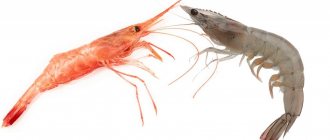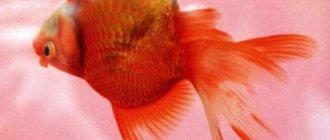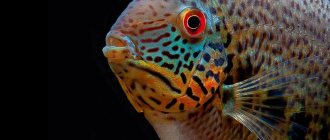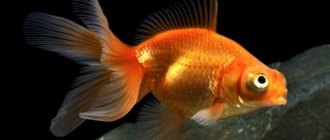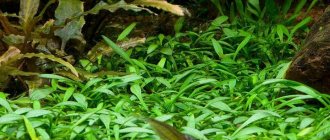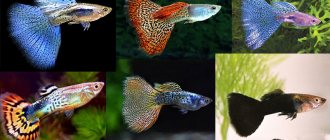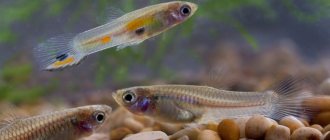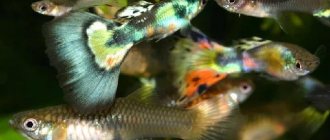Some crayfish are loved to be consumed with beer, others are cared for in aquariums, but few people remember that these creatures managed to survive for 130 million years, practically without changing their structure. The only thing that distinguishes them from their ancient counterparts is their size. During the Jurassic period, some types of crayfish reached 3 m in length and could fend for themselves.
Today, among the ranks of crustaceans, there are about 55,000 representatives of various lengths, living in sea or fresh water, and some of them prefer to be land-dwelling.
History of the delicacy
People have been using crayfish since Antiquity, but then they were not served as a delicacy. It is obvious that the healers and healers of the ancient world knew about the beneficial properties of shells, since they made potions from them for the bites of poisonous insects.
The first mention of the fact that river crayfish are a tasty dish was recorded in the 16th century, when one of the Swedish kings accidentally tasted them. A decree was immediately issued that the peasants should catch and deliver them to the royal table, but not dare to eat them themselves under pain of the death penalty.
Imitating the king, the Swedish nobles did the same, although the poor people were perplexed by the royal decree. They did not consider crayfish to be food and were content with them only in times of famine, which happened extremely rarely in this country.
In modern Sweden there is even a national holiday, Crayfish Eating Day, when people gather in large groups, boil these arthropods and drink strong alcoholic drinks.
Today, some types of crayfish (the photo demonstrates this) are considered a delicacy and are not just served with beer, but are prepared from them into soups, salads, stewed with vegetables, sauces made from them, and even fried.
Their meat is considered one of the most environmentally friendly, despite the fact that they are sanitation workers and “orderlies” of water sources. This is due to the balanced, self-cleaning organism given to them by nature.
Stream arthropods
There are different types of crayfish, but this name is not entirely accurate, since they live in swamps, ponds, lakes, and artificial reservoirs. It is more correct to use the term “freshwater”.
All representatives of crustaceans living in fresh water have the same structure:
- their body can reach a length of 10 to 20 cm;
- the upper part of the body is called the cephalothorax;
- they have an elongated and flatter abdomen;
- the body ends with a caudal fin;
- they have 10 pectoral legs and gills.
The most famous types of freshwater crayfish are:
- The broad-toed fish (Astacus astacus) lives in the reservoirs of Western Europe and high-mountain rivers of Switzerland, preferring places with temperatures from +7 to +24 degrees Celsius.
- Thin-toed (Astacus leptodactylus) can live in both fresh running or standing water, and brackish water with maximum heating up to +30.
These types of crayfish are not suitable for keeping in aquariums, as they are very demanding in care, especially in terms of water filtration and temperature control.
Structure
The appearance of animals is largely shaped by their stay in an oblong shell. The structure of a hermit crab can be seen when it is outside its shell at rare moments. Nature has endowed the animal with many adaptations with which it feels protected. The front part of the body is covered with a thick layer of chitin.
The shell protects the animal from enemies. A strong exoskeleton does not grow as the animal develops. During the molting period, the hermit crab sheds its shell, which is an unusual phenomenon. After some time, a new chitinous layer grows. Old clothes, if left in the aquarium where the crustacean lives, become its food.
Claws are the main weapon of the crustacean. In comparison with the cephalothorax and body, they look massive. The right claw, which is larger, blocks the entrance hole to the shell if danger threatens.
The left one, smaller in size, is active in searching for food. The claws are located close to the head. Nearby are two pairs of walking legs. They move the crayfish across the surface. The other legs, two hidden pairs, are very small and do not participate in walking.
The part of the body hidden in the shell, covered with soft cuticle, is not protected by chitin. The integument ensures gas exchange in the body. The hermit crab has to hide its unprotected body in a shell. The small legs help to stay in the house, preventing the house from falling off. Nature took care of the purpose of each organ.
Florida crayfish
Well known to many aquarists, the red Florida crayfish can actually be black, white, orange and even blue. It lives both in swamps and flowing rivers, and in flooded meadows, and as the water recedes, it “goes” into deep burrows underground.
These are the most undemanding species of crayfish in terms of composition and water quality. Their appearance is well known to residents not only of swamp Florida, but also of Europe. Its distinctive feature is the red spikes located on its claws.
This small arthropod (body length up to 12 cm) can easily tolerate water temperatures from +5 to + 30 degrees and reproduce year-round in an aquarium, laying up to 200 eggs. Incubation continues for 30 days, and during this time the temperature in the aquarium should be maintained at +20...+25 degrees.
The red swamp crayfish gets along well with fish, but you should remember that 1 pair will need an aquarium with 100 liters of water.
Who is a lobster
Lobster is one of the most famous representatives of crustaceans. In the places where it was harvested, it was once an incredibly cheap food for the poor. Now it is mainly famous as an exquisite delicacy served in expensive and prestigious restaurants.
The crustacean's habitat is the Mediterranean and North seas, the Atlantic and Pacific oceans. The strongest shell, incredibly powerful claws - the lobster has everything to survive in the predatory, unforgiving underwater world. Such an arsenal allows you to repel the attacks of huge fish and get food for yourself. The lobster's diet consists of small mollusks and crustaceans; occasionally it can also feed on carrion.
Lobster
The color of the lobster ranges from bluish-green to greenish-brown (looking ahead: the lobster and the lobster are the same representative of the underwater fauna), but after heat treatment, regardless of the type, it acquires a red color. The two front claws are disproportionately large in relation to the body, the rest are significantly smaller in size than the leading ones. Lobsters are characterized by pronounced sexual dimorphism: the appearance of males and females has quite strong differences. Males are also much larger in size. Their life expectancy is also different. Researchers say: the life of males is much shorter, about 30 years, while females, on average, live almost fifteen years longer.
The weight of an average lobster usually does not exceed one kilogram. Interesting fact: the weight of the largest lobster caught, which deserved a mention in the Guinness Book of Records, exceeded twenty kilograms, its length was more than 80 centimeters.
Lobster larvae feed on plankton, their living environment is the water element. As they grow up, they acquire a shell and sink to the bottom, to the habitat familiar to crustaceans. Lobsters molt repeatedly throughout their lives: as they increase in size, they exchange their old shell for a new one.
Blue crayfish from Cuba
Cuban blue crayfish can have other colors, as this directly depends on the natural conditions in their habitat and the color of their parents.
This tropical representative of arthropods lives in Cuba and Pinos. It has a small body up to 12 cm (excluding claws) and has a completely peaceful character, so it can be kept in aquariums with active or large fish.
The fact that this crayfish is unpretentious and reproduces well in captivity makes it a favorite of many aquarists. For 2 or 4 representatives of blue Cuban crayfish you will need a 50 liter container with good ventilation and water filtration.
The female of this species can lay up to 200 eggs at a time. For this to happen, it is better to transplant the crayfish into another smaller aquarium before mating, so that there is no interference from the “neighbors.” Incubation lasts 3 weeks, during which the water temperature should be +25 degrees.
Kamchatka crab
Kamchatka crab (the Japanese also call it “king crab”) is considered a real delicacy. Canned products based on it are highly valued on the market and are popular all over the world. This representative is considered one of the most outstanding among crustaceans. The width of the shell of the largest individuals can reach 23 cm, the paw span is 1.5 m, and the weight is up to 7 kg.
The cephalothorax of female and male king crabs is rectangular in shape, and the shell and claws are granular. The carapace has dorsal grooves, the orbits are long, occupying the entire anterior border.
The forehead is narrow, the peduncles are slightly expanded at the level of the cornea. The antennas are movable at the base; there is a whip, the length of which is always less than the length of the orbit. The antennas are small, partially hidden under the forehead. The crab has well-opened claws with long fingers. The king crab leads a gregarious lifestyle.
Because of this, it has become an important industrial site both in America and Japan, as well as in the Russian Federation. Marine inhabitants are caught using bottom nets. During the fishing process, traps with bait are used. The body of the arthropod consists of the abdomen, cephalothorax and 10 legs. The cephalothorax, legs and belly are covered with chitin with spiked growths.
Marine arthropod
The most popular among gourmets is lobster meat. These marine species of crayfish differ from their freshwater counterparts solely in size and weight. They have a strong chitinous shell, which young individuals change as they grow older.
The molting of a lobster takes from 2 to 4 weeks, during which it is defenseless and is forced to hide from its enemies in secluded places. The process of getting rid of tight coverage is interesting. The shell bursts on the lobster's back, like clothing cracking at the seams. To free itself, the crayfish has to step out of it with its back, removing one leg after the other.
A female lobster lays up to 4,000 eggs on her tail, after which the male fertilizes them. The incubation period lasts 9 months, during which the eggs remain on the mother’s body. Individuals that have survived 25 molts are considered ready to mate and eat.
Gourmets are well aware of the European, Norwegian and American types of lobsters. The cost of their tender, healthy, dietary meat starts at $50 per kilogram, and 100 years ago it was used as bait for fishing.
Difference from lobster
Some online sources tell in detail how a lobster differs from a lobster, and even give examples in the photos corresponding to the description, in which these sea animals look different. But all assurances about the biological species differences of these crustaceans are erroneous. The answer to this question lies rather in the field of philology. The origins of the misconceptions lie in the history of the appearance of lobster in domestic cuisine, and translators of the names of overseas cuisine relied on different language sources. The English version sounds like lobster, which corresponds to the Russian lobster, while the German version sounds like hammer, long ago translated as lobster and assigned to all huge crustaceans. Therefore, despite common misconceptions, lobster and lobster are the same representative of the ocean fauna, although they are called differently.
Land representative of arthropods
If you think about the question of what types of crayfish there are, few people will remember that there are unique individuals that can climb trees.
These are coconut crayfish (Birgus latro) that live on the islands of the Indian and Western Pacific Oceans. During the day, these amazing creatures hide in the foliage of palm trees, and at night they come down to pick up fallen fruits or carrion from the ground. The islanders call these hermit crabs thieves, as they often pick up anything they think is bad.
Although the coconut crayfish spends most of its life on the ground, it begins its life in bodies of water, where females lay eggs, from which small and defenseless crustaceans emerge. To survive, they are forced to look for a protective covering for their bodies, which most often becomes some kind of shell.
After the young grow up, the crayfish come out and can no longer return to the aquatic environment, since their gills atrophy and their respiratory organs become ventilated lungs.
Those who want to see these unusual creatures will have to go into the tropical jungle at night. Their meat is considered a delicacy and an aphrodisiac, but hunting for them is extremely limited.
Lifestyle and habitat
The hermit crab is found on the sea coasts of Europe, the shores of Australia, and the Caribbean islands. Various species are distributed throughout the world, mainly in shallow areas of seas and oceans with ebbs and flows, but crustaceans also live on sandy river banks and in forests along the coasts.
They leave the aquatic environment and return to it only during the breeding season. Some types of hermits go deep under water up to 80-90 meters. The main elements are salt and fresh waters.
The small crustacean is considered a brave and hardy animal. The ability to defend oneself, to carry one’s own home throughout one’s life, and to build relationships with relatives is not given to every living organism.
Crustaceans experience the greatest risk of becoming a victim of predators during the period of changing houses. Low tide reveals their hiding places under rocks and among gorges. Many lonely crustaceans live in symbiosis with poisonous sea anemones and polychaete worms. Mutually beneficial existence strengthens each party in the problems of independence and provision of food.
The symbiosis of the hermit crab and the sea anemone, a close relative of jellyfish, is widely known They settle with hermits on their territory, use them as carriers, and feed on leftover food. Hermit crab and sea anemone fight their enemies together. The cohabitation of two organisms is an example of a beneficial symbiosis - mutualism.
The benefit of the sea anemone is that, moving slowly, it experiences a lack of food - marine inhabitants remember its location and avoid appearing nearby. Walking on a hermit's shell increases the chances of catching prey.
The sea hermit crab receives powerful protection - sea anemone poison kills small organisms and causes severe burns to large ones. Interestingly, cohabitants do not harm each other. Unions sometimes break up due to the need to change cramped housing for a growing crustacean. The empty sink does not stand idle for long; a new tenant is found, happy with the house with a live guard.
Unions of the hermit prido and the adamsia sea anemone are for life. During its life, the sea anemone completes its shell with secreted mucus, which quickly hardens. The crustacean does not have to look for a new home.
Relationships with the Nereis worm are also built on mutual interests. A tenant in a crustacean's house eats leftover food and at the same time tidies up the shell. Nereis cleans the interior walls of the house, takes care of the crustacean’s abdomen, removing all parasites. The hermit crab's attitude towards its neighbor is the most tender, although if it wanted it could easily crush its tenant. An adult crayfish is a large and strong animal.
An important feature of the life of a hermit is the condition of cleanliness of the reservoir. A large number of inhabitants on the coast is a sign of environmental safety. Unfortunately, pollution in European seas is causing population declines.
Activity is inherent in crayfish at any time of the day. They travel continuously in search of food. Omnivorousness pushes them to this. They cut dead fish down to the bare skeleton in a few hours.
Modern aquarium hobbyists keep hermit crabs in their autonomous reservoirs. Caring for the inhabitants is simple. It is important to gradually acclimatize animals to aquarium water.
A change in habitat sometimes manifests itself in premature molting of crayfish. Observing animal behavior is a very fascinating activity. They are very friendly with other inhabitants of the aquarium and never show aggression.
Rare crustaceans
The rarest species of crayfish that can live in aquariums are called apricot crayfish. They live in Indonesia and can be either a soft orange color or blue, which is extremely rare.
They are small in size, males rarely grow to 10 cm, and females are 8 cm long. To keep them in aquariums, you should not only ensure that the temperature is kept within +25 degrees, but also the bottom is properly designed.
These crayfish love fine gravel sprinkled with bamboo, almond or oak leaves, which also serve as a good antiseptic. Numerous shelters in the form of driftwood, metal tubes and artificial houses will not hurt either. For the most part, Orange Papua New Guinea lobster is a non-aggressive vegetarian, but it is still not recommended to add small fish to it.
Spiny crabs
This type of crab lives in most cases in the Pacific Ocean (in its northeastern part). This animal thrives in water with a low salt content; it can even be found in freshwater bodies of water. Often fishermen take the spiny crab out of the water along with the salmon.
See this type of arthropod on the shores of Kamchatka, the Kuril Islands, and Sakhalin. This animal prefers to live on soil with a high content of stones - in shallow water, where the depth does not exceed 25 meters. It is worth noting that sometimes this crab was caught from a depth of 350 meters.
The spiny crab most often leads a sedentary lifestyle; it optimally tolerates seasonal changes in temperature conditions. The animal's shell has a large number of spines, and its width can be about 15 cm. The main diet is small mollusks.
Largest freshwater arthropods
The largest species of crayfish that live in fresh water bodies come from Tasmania. In the rivers in the north of this Australian state, there are individuals reaching 60-80 cm in length and weighing from 3 to 6 kg.
Their favorite habitat is rivers with calm currents, good air ventilation and a water temperature of +18 degrees. Depending on which river these giants live in, lowland or mountainous, they can have a color from green and brown to blue.
Since Astacopsis gouldi live up to 40 years and are considered long-livers among their relatives, all their life processes are somewhat drawn out. For example, males are ready for reproduction only at 9 years old, and females at 14 years old, while mating occurs once every 2 years, and the incubation period lasts from autumn to summer of the next year. In this regard, it is customary for Tasmanian giants to keep a harem of females of different ages.
Reproduction
Aquarium crayfish make interesting pets. Reproduction of individuals will not cause problems if the proper conditions are created. Sometimes it is not possible to carry out this process, since all the inhabitants are of the same sex.
The size of individuals, as well as living conditions, vary significantly between species. Most crustaceans reach sexual maturity after reaching three months of age. Male individuals ready to reproduce can also be recognized by bright red stripes on their claws. There must be at least 2 females per male, since after fertilization he can eat her.
Heraxes
Another representative of Australian rivers is the Herax crayfish. What is surprising is that these arthropods, which have many species, include individuals of completely different sizes. So, some of them can be 40 cm in length and weigh up to 3 kg, while others grow up to 10 cm and are placed in aquariums with a volume of up to 20 liters. Another home for these freshwater species are the rivers of New Guinea.
It is not difficult to create conditions for keeping heraxes in an aquarium. They love warm water and the opportunity to dig in the soil, so if such “tenants” are present, it is better to plant the plants in pots. They don't eat them, but they can dig them up. Herax crayfish show indifference to the proximity of fish, but if you breed larger specimens with large claws, it is better to keep them in a separate container.
Adviсe
- Do not overfeed individuals with protein foods, as they become aggressive.
- Install as many decorative elements as possible in the tank, pieces of wood, stones, because arthropods love to build shelters in them.
- If disease occurs, transfer the infected individual to a separate aquarium.
- Do not leave a pregnant female in a common tank, as the offspring may be harmed.
Previous
Inhabitants of the Mysterious Cherry Shrimp in your aquarium
Next
InhabitantsTactics for breeding Achatina snails and caring for eggs
Keeping crayfish in an aquarium
In order for freshwater aquarium crayfish species to take root, it is necessary to constantly maintain clean water that is well enriched with oxygen.
When choosing a container for such “tenants”, you should proceed from the parameters that 1 individual 6-7 cm will require 15 liters of water. To make your pets feel at home, the bottom should be properly designed. You will need driftwood, gravel or sand, ceramic or metal cylinders where the crayfish can hide during the day.
Planting plants in a container depends on the type of cancer, as well as whether there will be fish with it. Otherwise, keeping these individuals is not a hassle; the main thing is to remember to cover the aquarium with a lid, otherwise you may find your pet on the bed.

